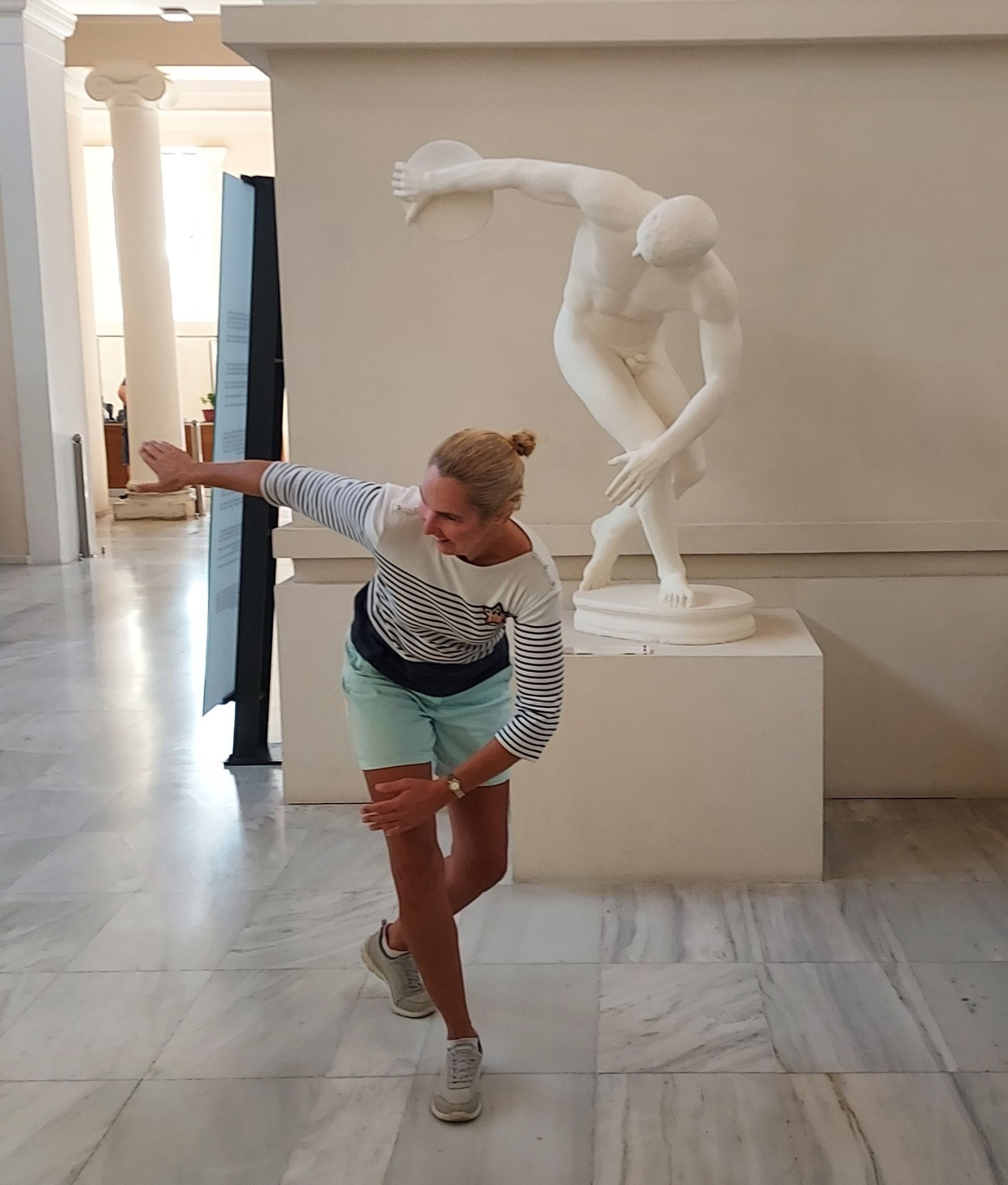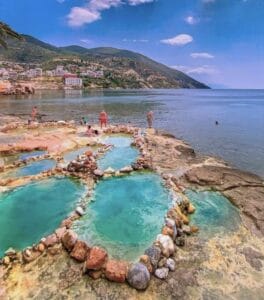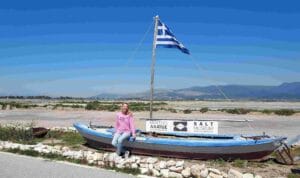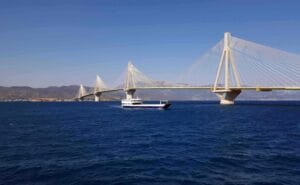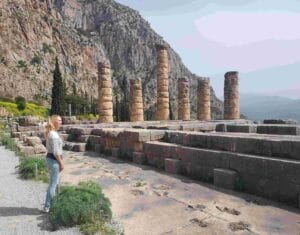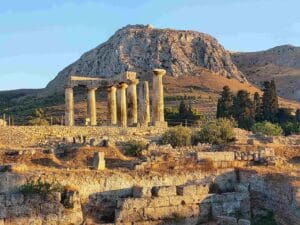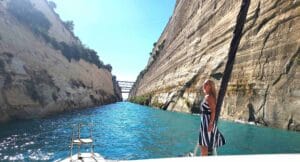After starting in Greece with enjoying the Ionic islands (Corfu, Lefkas, Kefalonia and Zakynthos), we now go to the mainland of Greece: Peloponnese! Our first blog about sailing Peloponnese is visiting the ancient city of Olympia, which was on our wish list of a long time!

Wild nature
It’s always interesting when you start sailing a new mainland, because it never starts with a big clean city, but it usually start with a rugged terrain, a bit cape-like. Like a new country is just starting up and you first meet the first steps in doing so! Also in Greece this is the case, we sailed from the Ionic islands to the mainland which is the region of Peloponnese. We saw the coast line and found a nice bay. This area is quite extinct, a lot of wild nature and also a few fishermen stations. They came here because nature blooms and grows freely here, without tourists visiting.
The bay was perfectly sheltered and we saw on the map that it was quite shallow in the bay and we saw a reef of stones sticking out of the water and about 10 fisherman’s huts build on them.

So we took our dinghy and took a look at the fishermen houses close by.

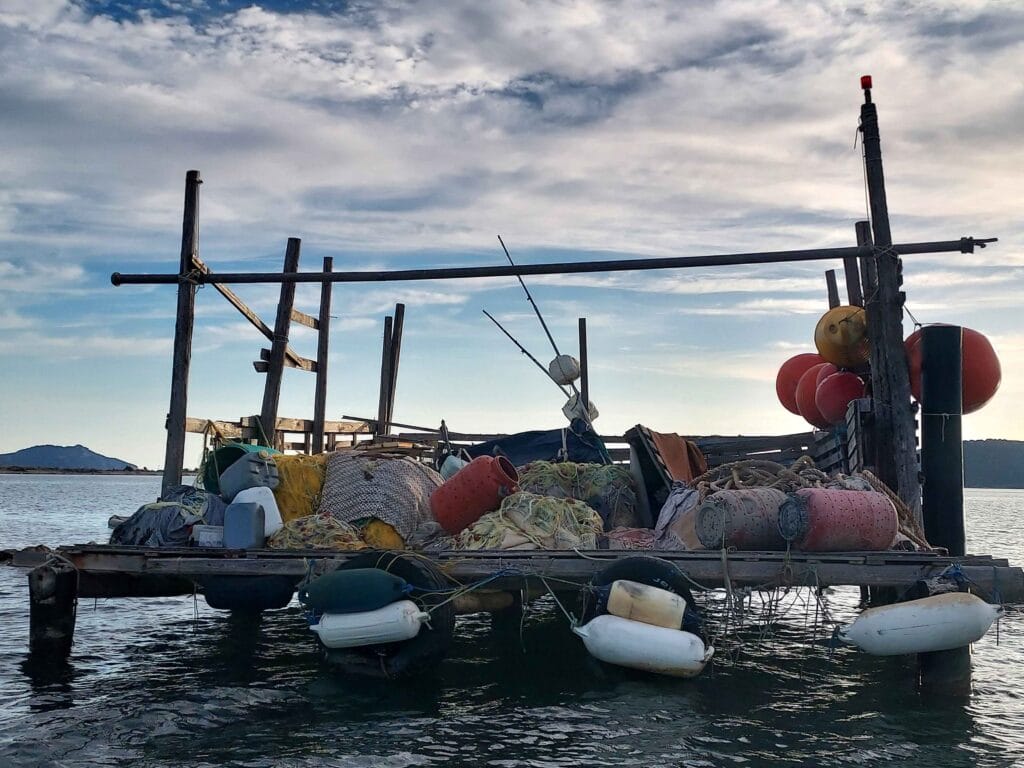
When sunset started, we had a free view on the beautiful orange colors, because we were at the Westcoast of Greece.
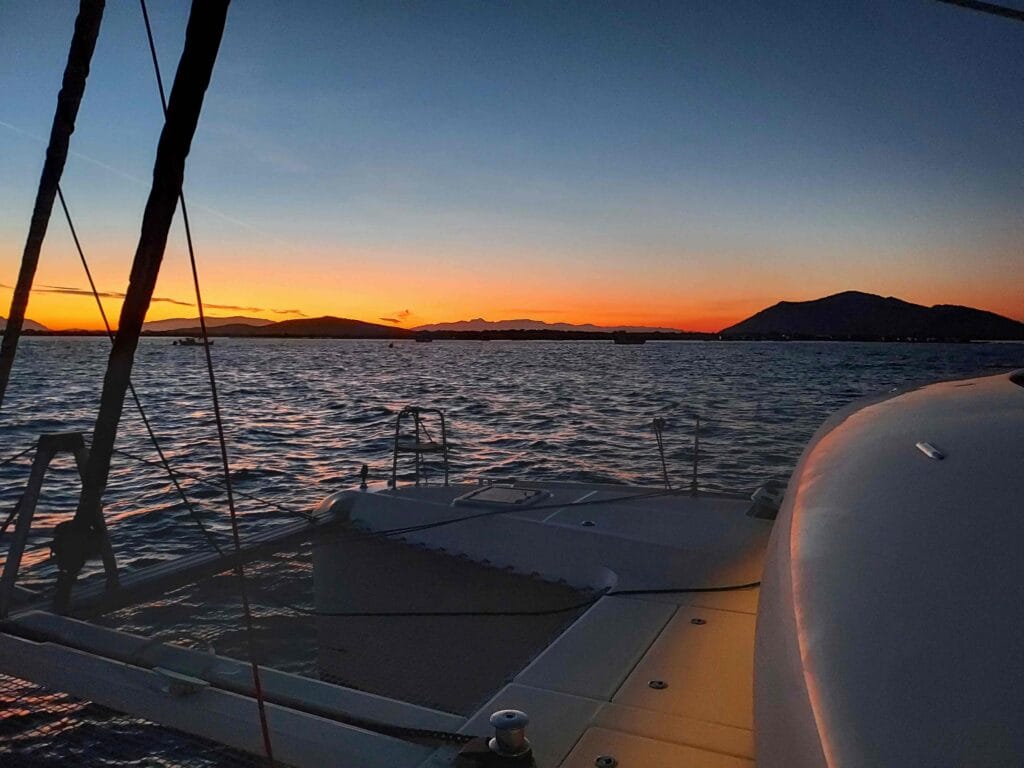
Katakolo
In the morning we sailed further south along the coast line to the first village and also our destination for that day: the harbor of Katakolo. This is a cosy harbor where we stayed for 3 days. Since it’s winter, there are not many boats in the harbor. Most tourists sail from April till October and then hoist their boats on land to do maintenance or repairs. We love wintersailing, because there are many good days to sail, it’s quite everywhere and harbors are cheap. We paid € 14 per night for our catamaran. A lot different to the € 140 we paid in July in Croatia 😉.
The small marina is next to the village which also has this fishermen’s harbor with colorfull boats. Also the boulevard at the harbor with all the colorful houses stick out.
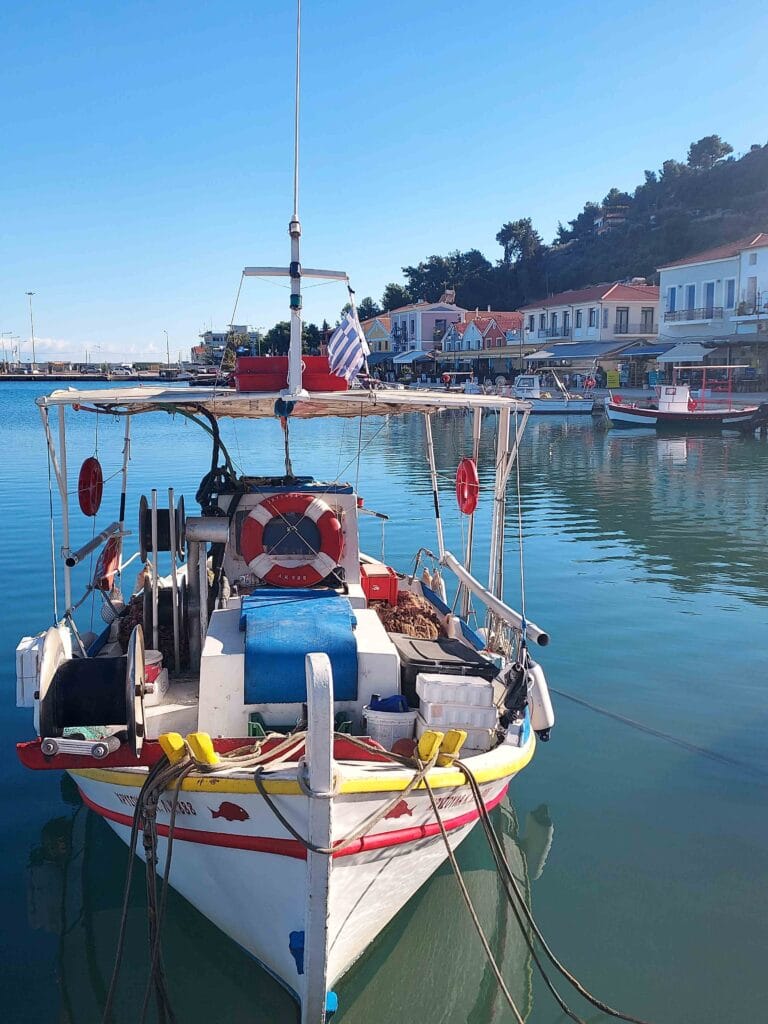
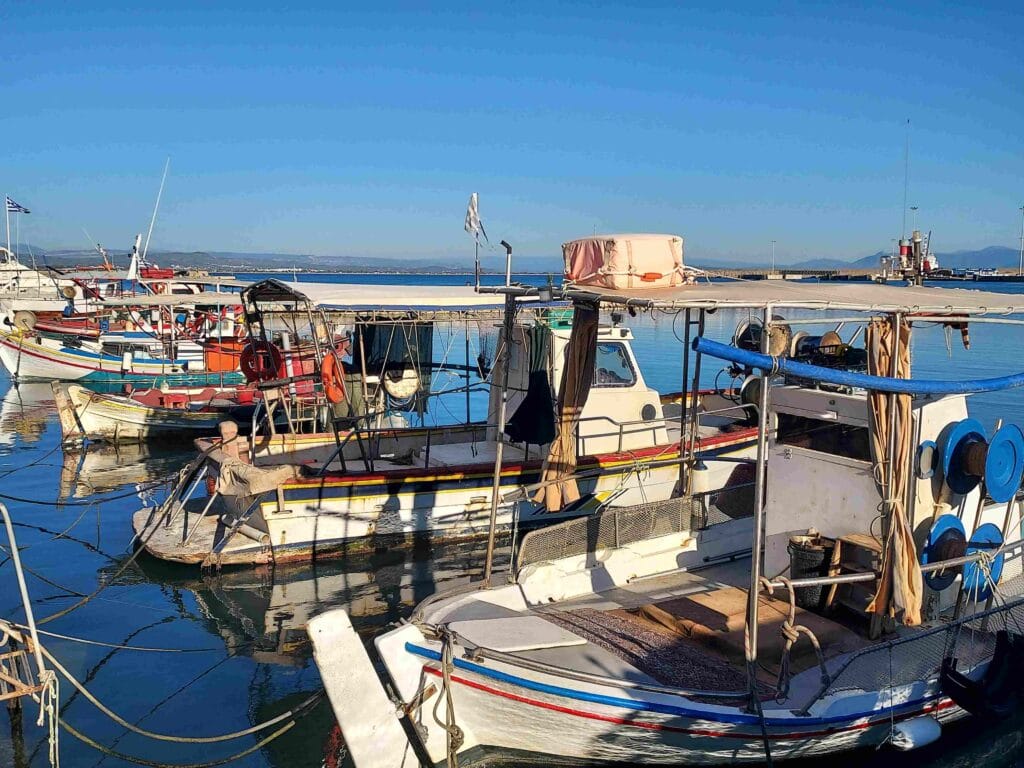
I went there a few times to do groceries and took this picture of the 3 old men fishing:
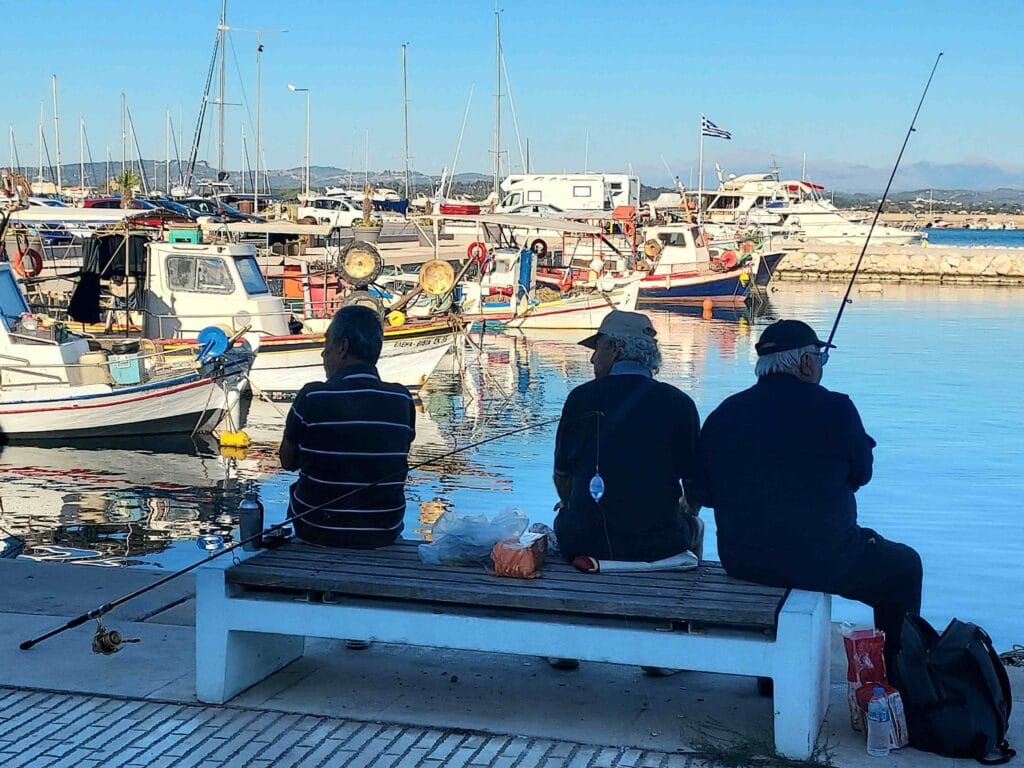
Olympia
The reason why we sailed to Katakolo is that it’s the closest harbor to the ancient city of Olympia, which is about 35 km cycling inland. So we could leave the boat and cycle about 1,5-2 hours to Olympia with our e-bike and e-step. We had great weather and so we did!


When we were closeby Olympia, we began to see signs that we were near. Do you see the number in the left upper corner? The first games were 776 v. Chr, so the year 2024 now is exactly 2800 years later!

Olympia is a vast excavation site on the site where the Olympic Games were held every four years in classical antiquity. It was dedicated to Zeus Olympios, = of Olympus, hence the name Olympia. The domain, called the Altis, sacred forest, and its immediate surroundings were built up over time with a very large number of temples, altars, statues, treasuries and buildings intended for the games, including a stadium.
First Olympic Games
In 776 BC the first Games were held, which consisted of one event, namely a running competition, a sprint of 192 meters on a plain sand plain. A line indicated the start and finish:

Athletes did not run in circles, but simply turned around at the end of the track. Over time, the open track was found to be unsuitable; improvements were made until a rectangular track was obtained with natural slopes at the edges as stands for the public. Around 350 BC stone stands were built with standing places that could accommodate about 40 to 45 thousand spectators.

Over the years, more and more sports were added: boxing, wrestling, pankration (a combination of boxing and wrestling), horse racing, various running competitions and the pentathlon, a pentathlon consisting of wrestling, running, long jumping, javelin throwing and discus throwing. The classical Olympics did not have a marathon. This is a modern addition based on the Battle of Marathon in 490 B.C.
Athletes were only men and competed completely naked as a tribute to the gods and to maximize freedom of movement. This is why the word “gymnasium” comes from the Greek “gymnos,” meaning naked.
Because more and more events were added, the games lasted not one but five days. Three days were used for the games, one according to religious rituals, and on the last day all participants were given a banquet.
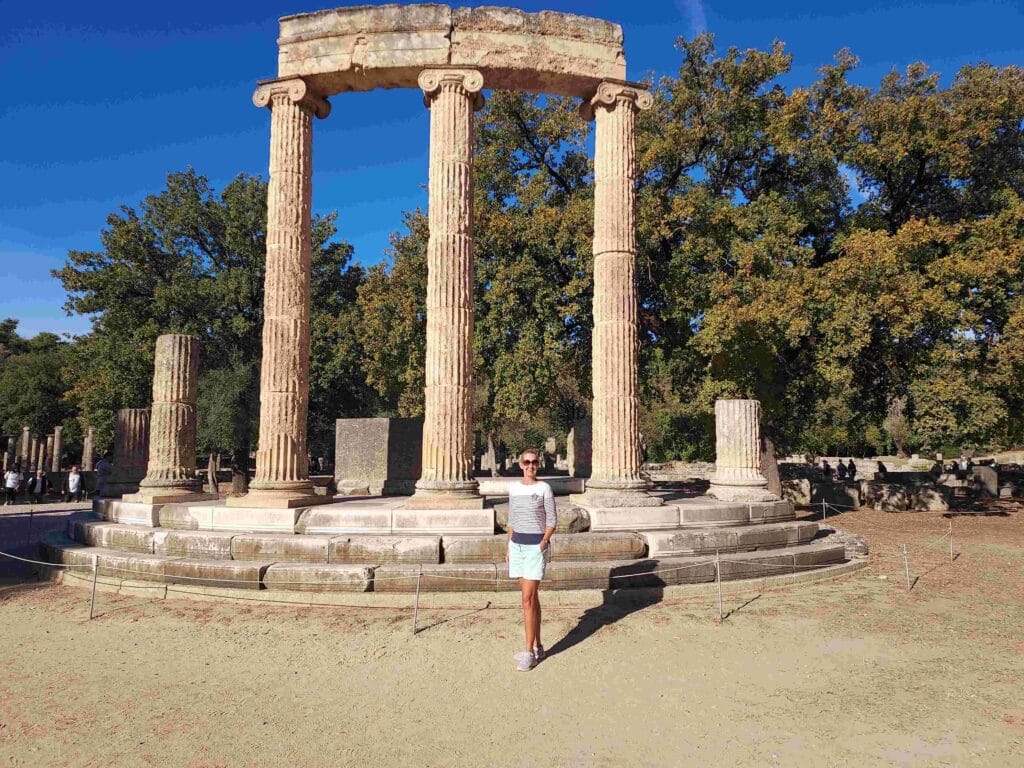
The concept of Olympic peace also dates back to antiquity. Before the start of the games, a sacred truce was declared. This lasted five days at first, later even three months, to protect the visitors and athletes on their way to Olympia.
Temple of Zeus
The ancient Games were connected to Zeus, the Greek supreme god, below you can see the remains of the temple. The temple also housed a 12-metre-high gold and ivory statue of Zeus on his throne, one of the 7 wonders of the ancient world. It was transported to Constantinople in 426 AD, where it was lost in a palace fire 50 years later.

In front of the temple of Zeus Olympia, 100 oxen were burned on the main altar. This fire was kept burning during the Games. Its flame, like all other sacrifices, was lit with the sacred fire of the goddess Hestia. Now the fire is carried from Olympia to the country where the Olympic Games are held.
Archeological Museum of Olympia
We also enjoyed visiting the museum. For example, you can see a model of Olympia there. It was not a real city. The only permanent residents were priests and temple staff, such as cooks, wood and metal workers and guides to show visitors around. Visitors to the games, which took place once every 4 years in the summer, camped in the open air; for official guests there was a special lodging, the Leonidaion.


Many Greek objects from the temples have ended up in the museum, such as sculptures and Greek vases. Athletes who cheated were required to pay a fine that was used to build statues of Zeus. These statues were placed at the entrance of the stadium as a warning to others.


Olympic prizes
On the last day the athletes received their prize, the ancient Greeks only recognized first places, there was no second or third prize. The prize consisted of a branch of the sacred wild olive tree (the altis) that grew on the grounds near the temple of Zeus. For the modern athlete this means little, but for the Greeks the tree had a strong symbolic and religious value. In mythical times it was Heracles who crowned the first Olympic winner with a wreath of olive branches and from this the Olympic custom originated.

Olympic winners were also declared almost divine in their home cities and driven around in a carriage with four horses. They could often count on a lifetime allowance, free food, no taxes, free seats in the theatre and many other pleasant privileges. And the names of all 4,237 athletes who won since 776 BC at the 293 Olympic Games held in the following 1,169 years have all been handed down by classical authors to our own time.
The games lasted until 393 AD, when Emperor Theodosius I banned them because of their pagan character.

After all these impressions, we returned to the boat in Katakolo. We were lucky that there was a little train between our port and Olympia, which only runs twice a day and we were allowed to take our bikes, so a relaxed return journey!


